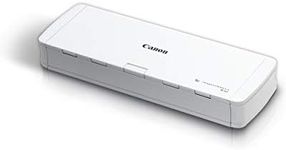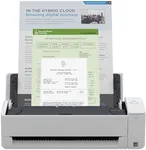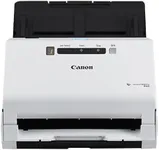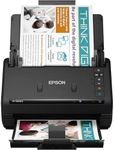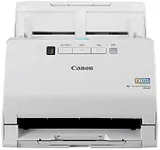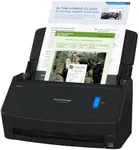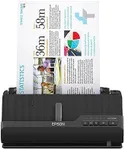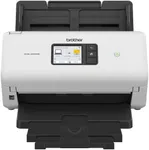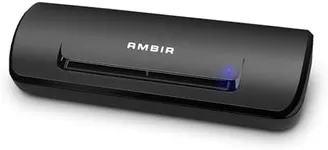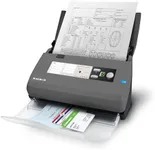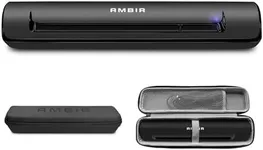Buying Guide for the Best Portable Document Scanners
Choosing the right portable document scanner can make a significant difference in your productivity and convenience, especially if you frequently need to digitize documents on the go. To find the best fit for your needs, it's important to understand the key specifications and how they impact the scanner's performance and usability. Here are the main factors to consider when selecting a portable document scanner.ResolutionResolution refers to the clarity and detail of the scanned image, measured in dots per inch (DPI). Higher resolution means better image quality, which is important for scanning detailed documents or images. For general document scanning, a resolution of 300-600 DPI is usually sufficient. If you need to scan photos or documents with fine details, look for a scanner with a higher resolution, such as 1200 DPI or more. Consider your typical scanning needs to determine the appropriate resolution for you.
Scanning SpeedScanning speed indicates how quickly a scanner can process documents, usually measured in pages per minute (PPM). Faster scanning speeds are beneficial if you need to scan large volumes of documents quickly. Scanners with speeds of 8-15 PPM are suitable for moderate use, while those with speeds of 20 PPM or higher are ideal for heavy-duty scanning tasks. Think about how often and how many documents you need to scan to choose a scanner with an appropriate speed.
ConnectivityConnectivity options determine how the scanner communicates with your devices. Common options include USB, Wi-Fi, and Bluetooth. USB connections are reliable and straightforward, while Wi-Fi and Bluetooth offer wireless convenience, allowing you to scan directly to your computer, smartphone, or cloud storage. If you need flexibility and ease of use, consider a scanner with wireless connectivity. Evaluate your typical workflow and device compatibility to decide which connectivity options are best for you.
PortabilityPortability is a key factor for a portable document scanner, encompassing size, weight, and battery life. A compact and lightweight scanner is easier to carry around, making it ideal for travel or remote work. Battery-operated scanners offer additional convenience, allowing you to scan without needing a power outlet. Consider how often you will be on the move and whether you need a scanner that can operate independently of a power source to choose the right level of portability.
Document HandlingDocument handling capabilities refer to the types and sizes of documents a scanner can process. Some scanners can handle a variety of media, including receipts, business cards, and photos, while others are limited to standard paper sizes. Automatic document feeders (ADF) can streamline the scanning process by allowing you to scan multiple pages at once. If you need to scan diverse document types or large volumes, look for a scanner with versatile document handling features. Assess your typical scanning tasks to determine the necessary document handling capabilities.
Software and CompatibilityThe software that comes with a scanner can greatly enhance its functionality, offering features like OCR (optical character recognition) for converting scanned text into editable documents, and integration with cloud services. Compatibility with your operating system and preferred applications is also crucial. Ensure the scanner's software supports your workflow and provides the features you need. Check for compatibility with your devices and software to ensure seamless integration.
